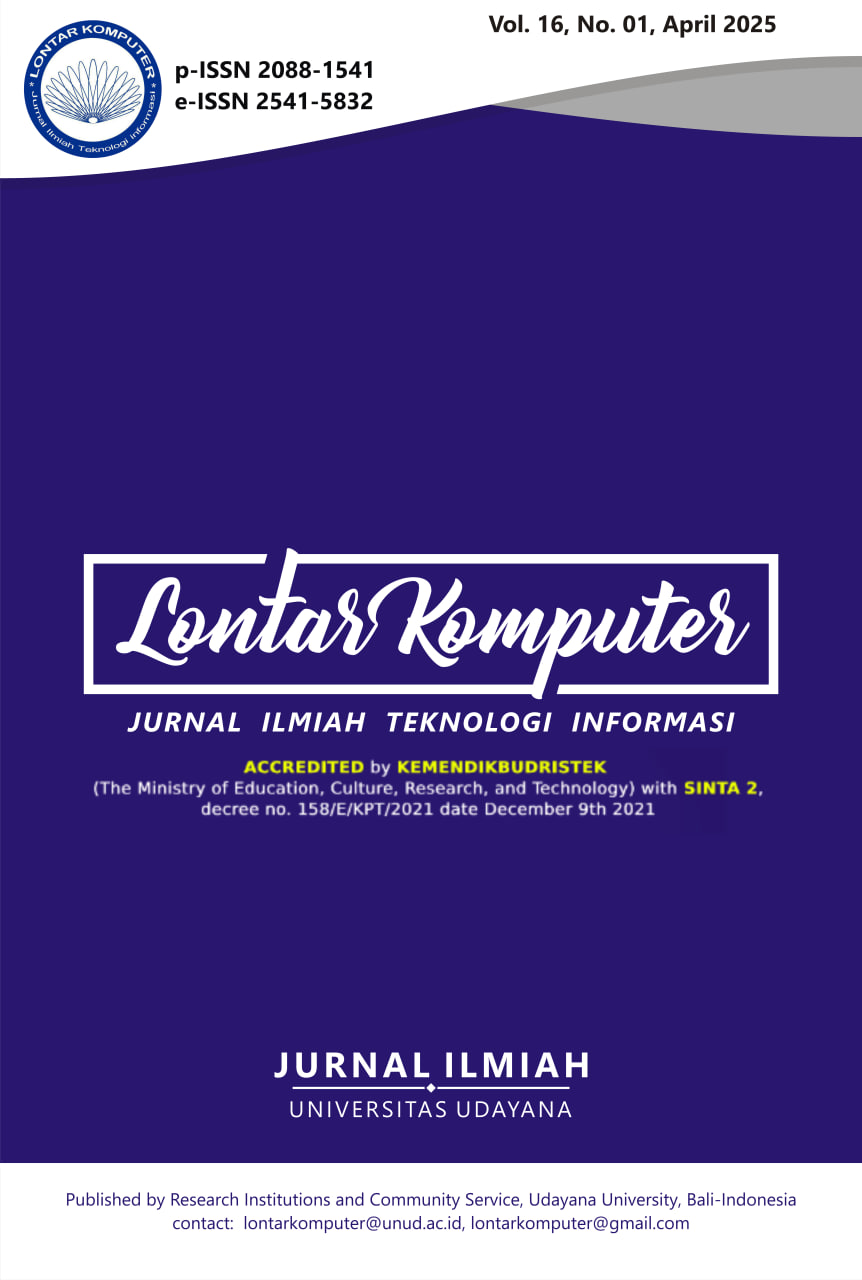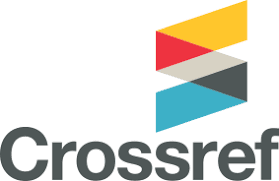Maintenance Scheduling for Buildings Using Fuzzy Logic Application
Abstract
This research proposes an innovative approach to building maintenance scheduling using fuzzy logic. Fuzzy logic addresses uncertainty and complexity in decision-making processes concerning prioritizing and scheduling maintenance tasks. This study aims to enhance the efficiency of maintenance scheduling, reduce maintenance costs, and consider the variability in building conditions. Traditional methods, such as PERT (Program Evaluation and Review Technique) and CPM (Critical Path Method), have limitations in accurately predicting scheduling times. At the same time, fuzzy logic offers a more precise approach to overcoming uncertainty. Implementing a maintenance scheduling model based on fuzzy logic is expected to yield a more adaptive and responsive maintenance plan in response to changes in building conditions. The results of this research are expected to contribute positively to building maintenance management by leveraging the advantages of fuzzy logic in addressing the challenges of complexity and uncertainty in building maintenance management. By applying fuzzy logic-based maintenance scheduling, it is hoped that precise and efficient building maintenance scheduling can be achieved, thereby minimizing project completion time and assisting project managers. The fuzzy logic method can be employed for construction project scheduling according to the schedule determined by the contractor. This allows the contractor to use it as a consideration for the total duration, along with detailed timing in the project proposal. For the owner, it provides insights into the potential project completion time.
Downloads
References
[2] C. Drent, S. Kapodistria, and J. A. C. Resing, "Condition-based maintenance policies under imperfect maintenance at scheduled and unscheduled opportunities," Queueing Systems, vol. 93, pp. 269–308, 2019, doi: https://doi.org/10.1007/s11134-019-09627-w.
[3] A. Maulana and F. Kurniawan, "Time optimization using CPM, PERT and PDM methods in the social and department of Kelautan building development project Gresik district," IJTI International Journal of Transportation and Infrastructure eISSN 2597-4769 pISSN 2597-4734, vol. 2, no. 2, pp. 57-66, 2019, doi: https://doi.org/10.29138/ijti.v2i2.784.
[4] Y. Huo, D. Delahaye, and M. Sbihi, "A probabilistic model based optimization for aircraft scheduling in terminal area under uncertainty," Transportation Research Part C: Emerging Technologies, vol. 132, 2021, doi: https://doi.org/10.1016/j.trc.2021.103374.
[5] S. Salvatori, V. Introna, V. Cesarotti, and I. Baffo, "Engineer-to-order Project Schedule Planning through a probabilistic simplified approach: a case study," Journal of Modern Project Management, vol. 7, no. 3, pp. 190-214, 2019, doi: https://doi.org/10.19255/JMPM02108.
[6] J. Sobieraj and D. Metelski, "Project Risk in the Context of Construction Schedules—Combined Monte Carlo Simulation and Time at Risk (TaR) Approach: Insights from the Fort Bema Housing Estate Complex," Applied Sciences, vol. 12, no. 3, p. 1044, 2022, doi: https://doi.org/10.3390/app12031044.
[7] Z. K. Nemaa and G. K. Aswed, "Forecasting construction time for road projects and infrastructure using the fuzzy PERT method," in IOP conference series: materials science and engineering, 2021, vol. 1076, no. 1: IOP Publishing, p. 012123, doi: https://doi.org/10.1088/1757-899X/1076/1/012123.
[8] S. Park, N. Kwon, and Y. Ahn, "Forecasting repair schedule for building components based on case-based reasoning and fuzzy-AHP," Sustainability, vol. 11, no. 24, p. 7181, 2019, doi: https://doi.org/10.3390/su11247181.
[9] M. Gallab, H. Bouloiz, Y. L. Alaoui, and M. Tkiouat, "Risk assessment of maintenance activities using fuzzy logic," Procedia computer science, vol. 148, pp. 226-235, 2019, doi: https://doi.org/10.1016/j.procs.2019.01.065.
[10] N. Dayoub, A. Stashevskiy, S. M. Elroba, and M. R. Elshahate, "Application of Fuzzy theory in project scheduling," in International Conference on Engineering Systems 2020, Moscow, 2020: IOP Publishing, doi: https://doi.org/10.1088/1742-6596/1687/1/012011.
[11] E. Akan and S. Bayar, "Interval type-2 fuzzy program evaluation and review technique for project management in shipbuilding," Ships and Offshore Structures, vol. 17, no. 8, pp. 1-19, 2021, doi: https://doi.org/10.1080/17445302.2021.1950350.
[12] V. B. Watkar, "Fuzzy Inference Systems: Types & Applications," Journal of Emerging Technologies and Innovative Research, vol. 9, no. 12, 2022. [Online]. Available: https://www.jetir.org/papers/JETIR2212653.pdf.
[13] D. P. Umum, "Peraturan Menteri Pekerjaan Umum Nomor 24 Tahun 2008 tentang Pedoman Pemeliharaan dan Perawatan Bangunan Gedung," Kementerian Pekerjaan Umum. Jakarta, 2008. [Online]. Available: https://peraturan.bpk.go.id/Details/104476/permen-pupr-no-24prtm2008-tahun-2008.
[14] F. Klashanov and A. Swan, "Application of fuzzy logic methods for controlling buildings HVAC equipment," in IOP Conference Series: Materials Science and Engineering, 2020, vol. 869, no. 2: IOP Publishing, p. 022010, doi: https://doi.org/10.1088/1757-899X/869/2/022010.
[15] A. Taneva, D. Atanasova, and A. Daskalov, "Fuzzy Logic Control in Building Automation Application," Engineering Proceedings, vol. 41, no. 1, p. 14, 2023, doi: https://doi.org/10.3390/engproc2023041014.
[16] A. Khalim, H. U. Ghifarsyam, N. Rozy, and F. Ma’arif, "Scheduling design of Jakarta-Cikampek II elevated toll road project (P. 186–P. 187)," Journal of Engineering and Applied Technology, vol. 1, no. 2, 2020, doi: https://doi.org/10.21831/jeatech.v1i2.34957.
[17] W. W. Yudiarti and F. A. Razi, "Application of Critical Path Method and Fuzzy Logic in Optimizing Bottled Drinking Water Production," InPrime: Indonesian Journal of Pure and Applied Mathematics, vol. 3, no. 1, pp. 53-62, 2021, doi: https://doi.org/10.15408/inprime.v3i1.19646.
[18] A. Wibowo, "Alternatif Metoda Penjadwalan Proyek Konstruksi Menggunakan Teori Set Samar," Civil Engineering Dimension, vol. 3, no. 1, pp. 1-8, 2001, doi: https://doi.org/10.9744/ced.3.1.pp.%201-8.
[19] H. Gharib and G. Kovács, "Implementation and Possibilities of Fuzzy Logic for Optimal Operation and Maintenance of Marine Diesel Engines," Machines, vol. 12, no. 6, pp. 1-16, 2024, doi: https://doi.org/10.3390/machines12060425.
[20] T. Sudha and G. Jayalalitha, "Fuzzy triangular numbers in-Sierpinski triangle and right angle triangle," in Journal of Physics: Conference Series, 2020, vol. 1597, no. 1: IOP Publishing, p. 012022, doi: https://doi.org/10.1088/1742-6596/1597/1/012022.
[21] E. Natarajan, F. Augustin, M. K. Kaabar, C. R. Kenneth, and K. Yenoke, "Various defuzzification and ranking techniques for the heptagonal fuzzy number to prioritize the vulnerable countries of stroke disease," Results in Control and Optimization, vol. 12, p. 100248, 2023, doi: https://doi.org/10.1016/j.rico.2023.100248.
[22] Q. Liu and H. Yang, "Incorporating variability in lean manufacturing: a fuzzy value stream mapping approach," Mathematical Problems in Engineering, vol. 2020, pp. 1-17, 2020, doi: https://doi.org/10.1155/2020/1347054.
[23] Ö. Ökmen and A. Öztaş, "A CPM-based scheduling method for construction projects with fuzzy sets and fuzzy operations," Journal of the South African Institution of Civil Engineering, vol. 56, no. 2, pp. 2-8, 2014, doi: https://hdl.handle.net/10520/EJC158382.
[24] D. Kurnia and W. Aulia, "Simulasi Penjadwalan Kegiatan Fisik Nagari Berbasis Metode Fuzzy Logic Application For Schedulling," Jurnal Sains dan Informatika: Research of Science and Informatic, vol. 5, no. 2, pp. 70-77, 2019, doi: https://doi.org/10.22216/jsi.v5i2.4771.
[25] A. Francis and S. Morin-Pepin, "The concept of float calculation based on the site occupation using the chronographical logic," in Creative Construction Conference, Primosten, Croatia, 2017, vol. 196: Procedia Engineering, ScienceDirect, Elsevier Ltd, pp. 690-697, doi: https://doi.org/10.1016/j.proeng.2017.07.235.
[26] J. Nisar and S. Halim, "The effect of critical activity on critical path and project duration in Precedence Diagram Method," International Journal of Structural and Construction Engineering, vol. 12, no. 9, pp. 837-843, 2018, doi: https://doi.org/10.5281/zenodo.1474541.
[27] V. Shankar, A. Venkatesh, C. Hofacker, and P. Naik, "Mobile marketing in the retailing environment: current insights and future research avenues," Journal of Interactive Marketing, vol. 24, no. 2, pp. 111-120, 2010, doi: https://doi.org/10.1016/j.intmar.2010.02.006.

This work is licensed under a Creative Commons Attribution 4.0 International License.
The Authors submitting a manuscript do so on the understanding that if accepted for publication, the copyright of the article shall be assigned to Jurnal Lontar Komputer as the publisher of the journal. Copyright encompasses exclusive rights to reproduce and deliver the article in all forms and media, as well as translations. The reproduction of any part of this journal (printed or online) will be allowed only with written permission from Jurnal Lontar Komputer. The Editorial Board of Jurnal Lontar Komputer makes every effort to ensure that no wrong or misleading data, opinions, or statements be published in the journal.
 This work is licensed under a Creative Commons Attribution 4.0 International License.
This work is licensed under a Creative Commons Attribution 4.0 International License.























